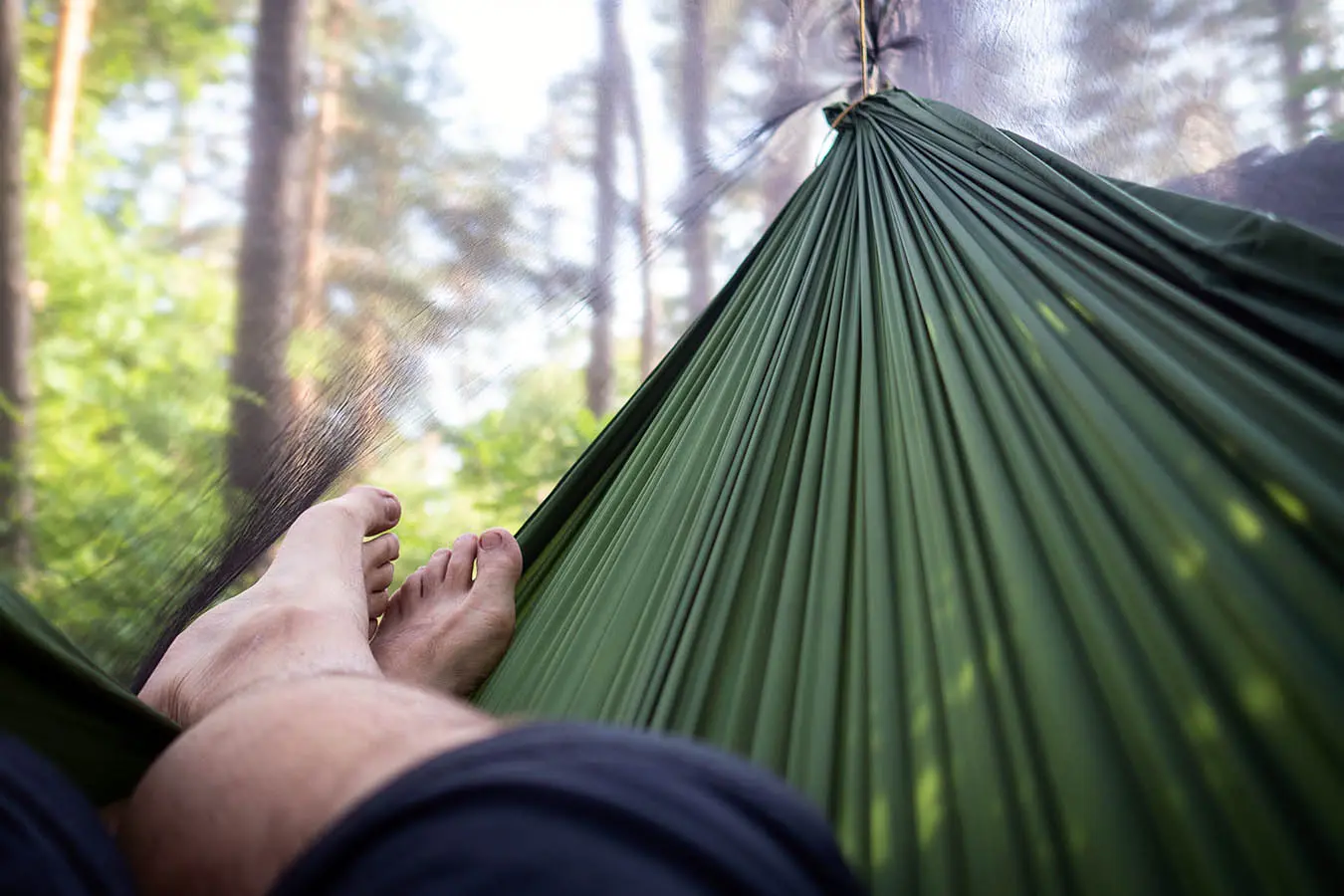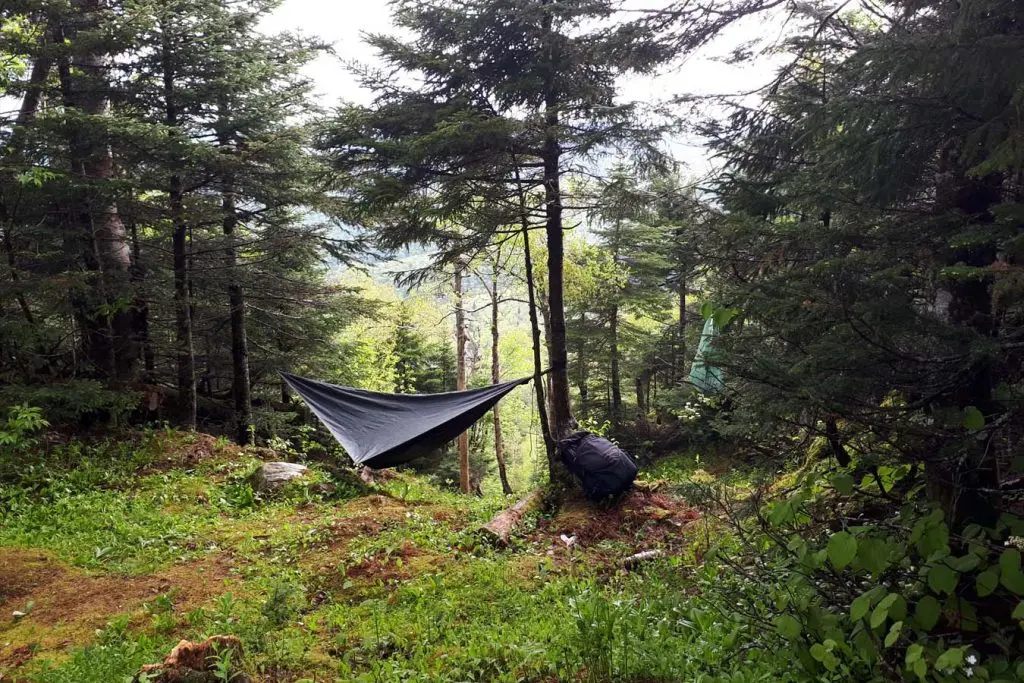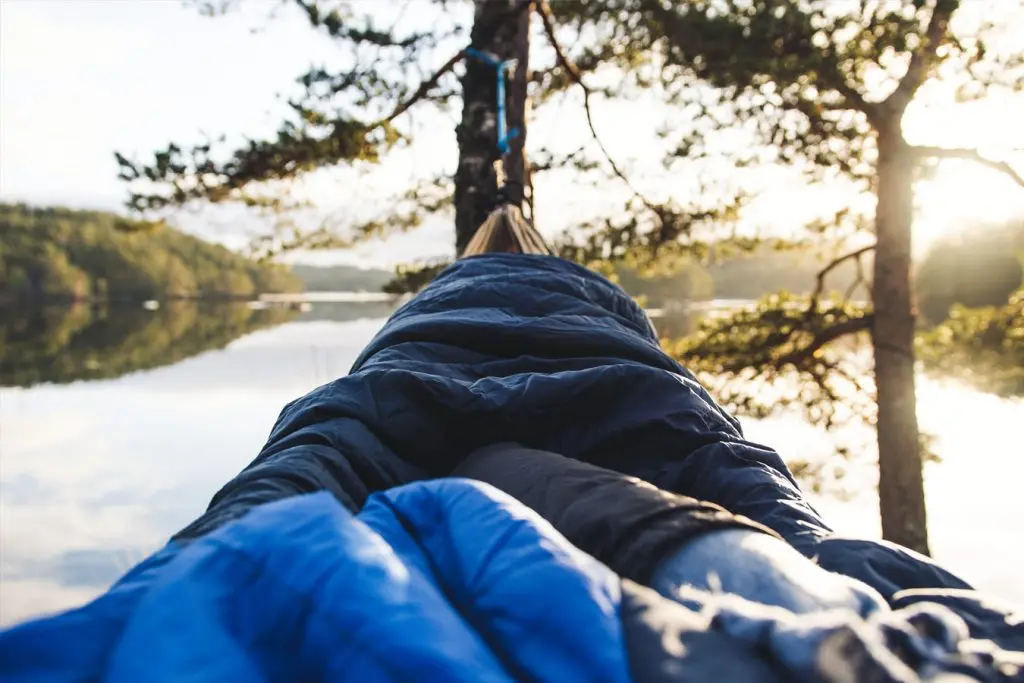For a long time, camping has been associated with rough living, spending nights in tents, and sleeping on the floor. To non-campers, it is almost synonymous with discomfort.
However, a lot of changes have happened in the camping industry in recent years. As a camper, if comfort is what you are after, there are now many ways you can get it. And one of these ways is hammock camping.
Many people have made the switch to hammock camping. This is partly because it is a lighter way to camp, and partly because the comfort of sleeping in a hammock is almost unmatched by other camping styles.
In this article we discuss just how comfortable hammock camping can be, and outline a few tips to help you make your hammock as snug as possible.
Is hammock camping comfortable?
Whether or not you will wake up with complaints in the morning, depends on how you set up your hammock. Factors like how high you hang it, the distance between the anchor points, and the angle at which you suspend the hammock all have a part to play.
If your hammock is properly suspended above the ground, you won’t feel roots, rocks, and any other particles under you as you sleep. You also won’t experience the discomfort that comes with uneven ground. This is one of the greatest perks about sleeping in a hammock.
If you are new to hammock camping, you might experience a rough couple of nights but it will get better as you get the hang of things. Here are a few common discomforts faced by hammock sleepers.
Cold butt syndrome
As you sleep in your hammock, your bottom might get cold, even with some insulation under you. This is because your weight on the insulation reduces its effectiveness.
Shoulder squeeze
The hammock might feel constricting around your shoulders making you uncomfortable through the night.
Calf pressure
Some hammock brands reinforce the centerline with stiff fabric. This exerts some pressure on your legs.
Leg hyper-extension
This discomfort begins as a strain on your feet and ankles. Depending on how you lie down, the hammock can offer too much support under your feet, thus exerting pressure onto them. If most of the support is under your feet and not under your legs, you may experience some pain.
Motion sickness
The suspended nature of the hammock means it will swing from side to side. This might make some campers nauseous.
Claustrophobia
The walls of the hammock are usually really close to your body. This might make some campers feel trapped.
Sharing the hammock
Having more than one person sleeping in a hammock will make the stay very uncomfortable, especially if you plan on spending a lot of time in there.
Most of these problems can be rectified by adjusting the position of your hammock and making some changes in how you sleep.
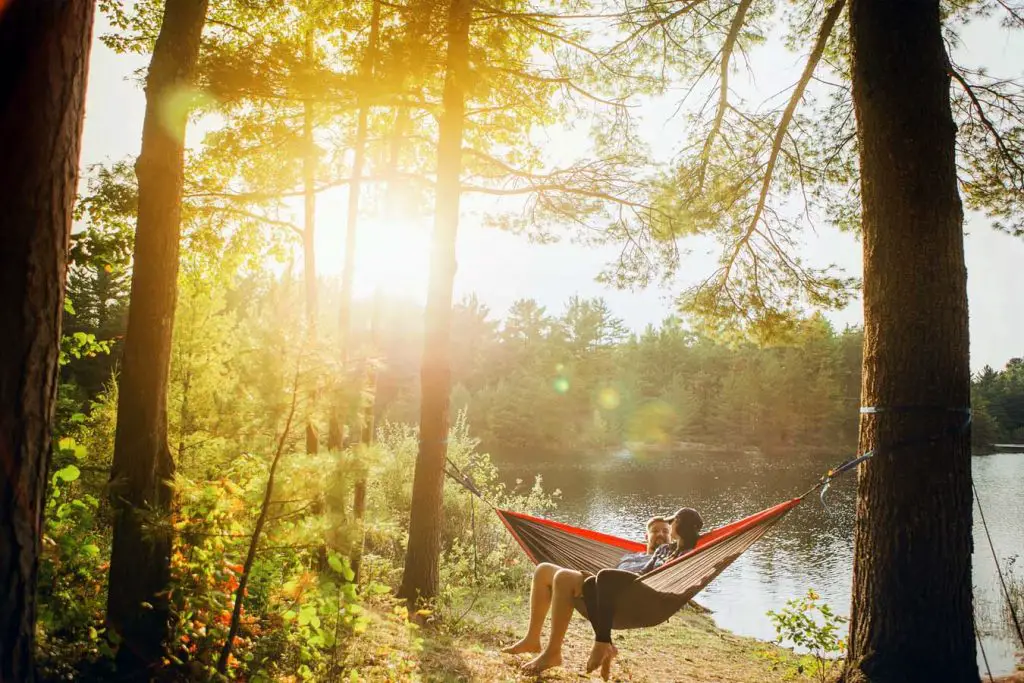
Is a hammock better than a tent?
Tents are the most common form of shelter used in camping and it might be difficult to make the transition to hammock camping. Here are a few reasons why hammocks are considered to be better than tents:
Lightweight
To pitch a tent, you will need tent poles, stakes, and lots of other equipment. On the other hand, you only need suspension straps and the hammock itself. If you are keen on saving both weight and space, you might appreciate hammocks.
You’ll sleep more comfortably in a hammock
If your hammock is properly set up, you are likely to have a night that is more peaceful than a camper in a sleeping bag. The gentle rocking of the hammock is soothing, and it helps you fall into a deeper sleep faster.
The ground is no longer a factor
When you sleep in a hammock, what happens on the ground doesn’t affect the quality of your sleep. You can set up camp on uneven ground or on top of roots, rocks, and any other obstacle. You also won’t have to worry about crawling insects getting in the hammock.
Hammocks are easier to set up
You would need less time and effort to hang up a hammock than you would need to put up a tent. You don’t have to rid the campsite of any stones and twigs before setting up. Hammocks save you the hassle of tent stakes and poles.
Fresher air
One of the best parts about sleeping in a hammock is that you get to enjoy the fresh night breeze. Hammocks offer better air circulation and an impressive view of the night sky.
You can accessorize your hammock
Tents offer more protection against the elements and flying insects than hammocks. You can always use a hammock rain fly and bug net to give you the same level of protection from mosquitoes, rain, and snow.
Hammocks leave no trace
With a hammock, it is easier to uphold the Leave no Trace campaign since they don’t damage the plant cover below them and if wide tree straps are used, the tree also remains healthy.
Hammocks are multipurpose
Tents are only useful when its time to sleep, shelter from the rain, or change your clothes. For a structure that needs a lot of effort to set up, tents do not offer a wide range of uses.
Hammocks, however, can serve a variety of purposes. You can use it as a camp chair when you need to sit and cook, enjoy the campfire, or read your favorite novel. It can also work as a swing, especially if you are camping with the little ones.
The hammock can also be used outside the camp setting. You can set it up in your backyard and relax on the lazy summer days.
Which is warmer, a tent or a hammock?
Generally, hammocks are colder than tents if they are used without any warming accessories. When you’re in a hammock, you are in open space. When the wind blows, it takes away some of your body heat leaving you colder. This concept is called wind chill. A tent is an enclosed space so the air remains stationary, retaining your body heat.
A common assumption is that hammocks are usually -20° F colder than tents. Although they are colder, a hammock can be made comfortably warm by using extra gear like underquilts and sleeping pads.
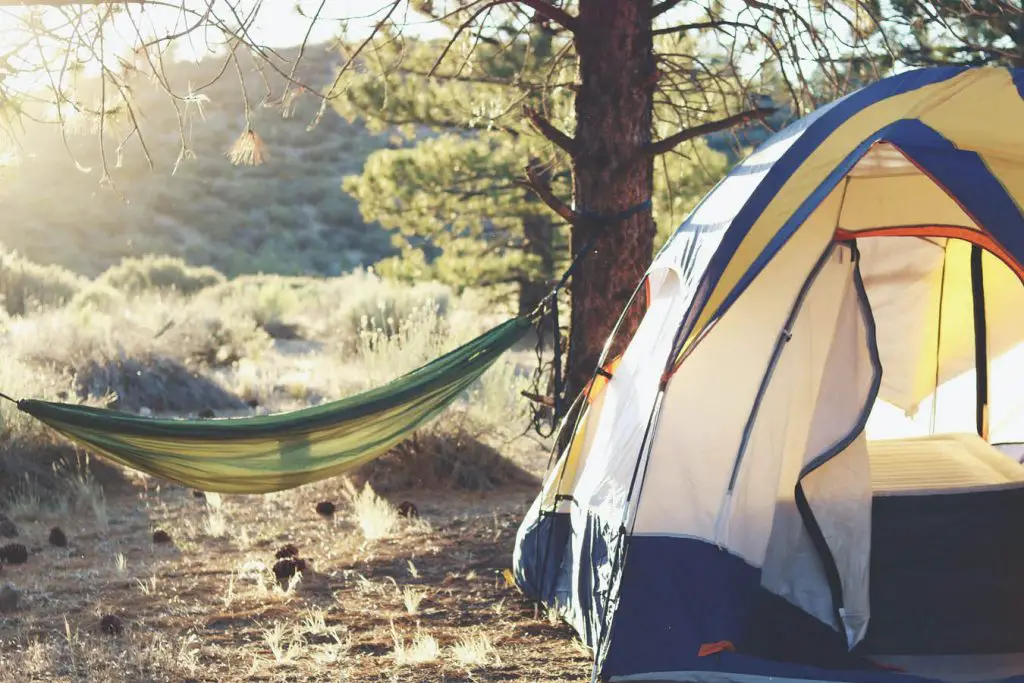
How can I make my hammock more comfortable?
As mentioned earlier, some discomforts come with sleeping in a hammock. You can get remove some of them through these tips:
Watch the sag angle
If your hammock straps are nearly horizontal, then you’ve hung it too tight. This causes the shoulder squeeze effect. You can prevent this by hanging your straps at a 30° angle from the ground to get a good sag. This will also lower your center of gravity, giving the hammock more stability and lowering your chances of falling out of it.
Lay diagonally
If you sleep parallel to the hammock’s centerline, you will experience the ‘banana’ effect which will make you feel uncomfortable and constrained. Lying diagonally will allow you to adapt a flatter and more ergonomic sleeping position.
Use pillows
As a solution for leg hyper-extension, consider placing a pillow under your knees. This reduces the stress that was being exerted on them. Instead of pillows, you can use clothes or a flexible water bottle.
Use a bug net
Hanging a bug net will keep you safe from potentially dangerous bug bites and the irritating buzz that comes with mosquitoes. Look for a net that covers your hammock fully and allows enough room for you to at least sit up.
Get a drip line
On rainy days and nights, you will appreciate a drip line. When it rains, water can get to your hammock through the suspension. Hanging a drip line around the suspension straps under the ridgeline will change the course of the water, keeping you dry.
Use an underquilt
An underquilt is the best solution to the cold butt syndrome. Since it goes under the hammock, it remains uncompressed. This allows it to efficiently offer insulation under you. You can also keep warm by wearing thick socks and using a sleeping pad, although it may keep slipping from under you.
Get the right height
While hanging the straps, ensure that the hammock is about 18 inches above the ground when you are in it. Hanging the hammock too high will make it difficult to get in and out and hanging it too low will have you sagging to the ground.
Hanging the straps around 5 feet off the ground should be okay, but you can always consult a hammock hang calculator to get the perfect height.
Do you need a sleeping bag with a hammock?
Even if it gets too cold, you won’t need to use a sleeping bag with your hammock. This is because the sleeping bag gets compressed when you lie on it so it would be ineffective against the cold butt syndrome. You are better off using a hammock underquilt and overquilt to keep you warm.
Final thoughts
For most people, the first few nights spent sleeping in a hammock are quite uncomfortable. However, with constant practice, anyone can learn to hang a hammock in a comfortable position and lay in it with ease.
With the tips outlined in this article, your next hammock camping experience should be one of your most comfortable ones yet. Happy hammocking!
Related guides
How To Find The Right Portable Hammock Camping Stand
How To Choose A Camping Hammock
How To Find The Best Hammock Top Quilt

